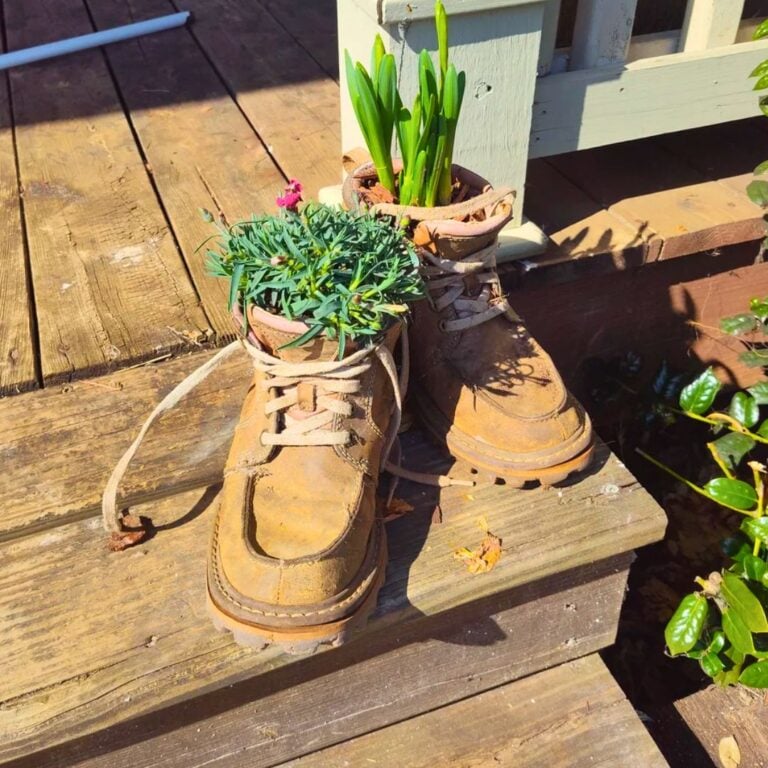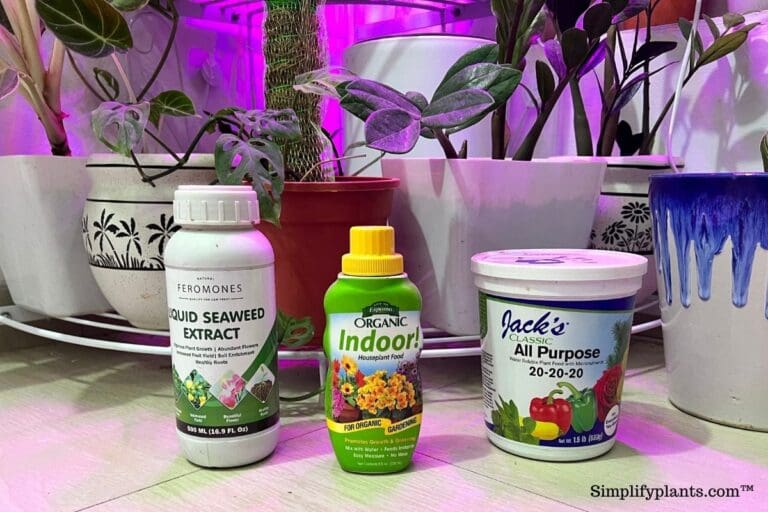4 Clever Ways to Group Plants for Warmth and Humidity
You know, the way I arrange my plants really does matter more than I expected. Some just seem happier when they share a cozy corner, basking in each other’s warmth and a bit of extra moisture in the air.
By putting the right plants together, I can create these little pockets of comfort that make them thrive. It’s kind of amazing how much difference a simple shuffle can make.
Honestly, I’m all for easy tricks that keep my plants happy without a lot of fuss. Grouping them well not only saves me time, but my place ends up looking way more vibrant.
If you’re curious, this article covers a few easy ways to boost humidity, manage light, and build those natural microclimates your plants crave.
Please note: Simplify Plants is reader-supported. As an Amazon Associate, I earn from qualifying purchases made by our readers with no extra cost added to you all! Some links in the post are affiliate links and I get a commission from purchases made through links in the post.
1) Cluster tropical plants like ferns and philodendrons together
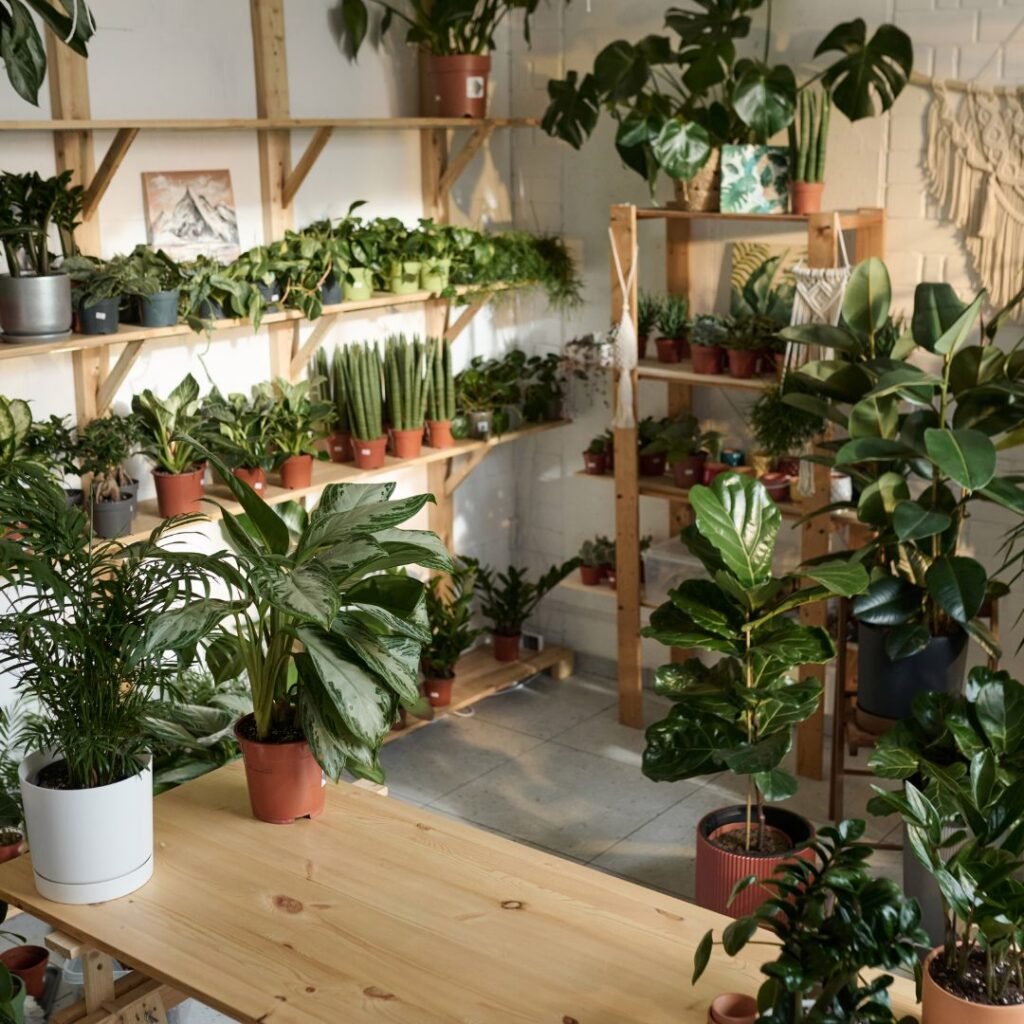
I’ve found that when I group tropical plants like ferns and philodendrons close together, the air around them just feels less dry. They release a bit of moisture from their leaves, so they sort of create their own little humid zone.
It means I don’t have to mist them constantly, which is a relief. Plus, I notice they seem to bounce back quicker from dry spells, especially in winter.
Clustering plants like this forms a small microclimate right in my living room. They seem to perk up when they’re near each other, and honestly, it makes the space look lush.
I usually tuck ferns and philodendrons into the same corner. That way, they get the humidity they love, and I don’t have to remember different watering routines for each one.
Keeping them grouped saves space, too. It’s an easy way to give them a more natural environment and makes my place feel like a mini jungle.
2) Place succulents near humidity trays to boost moisture
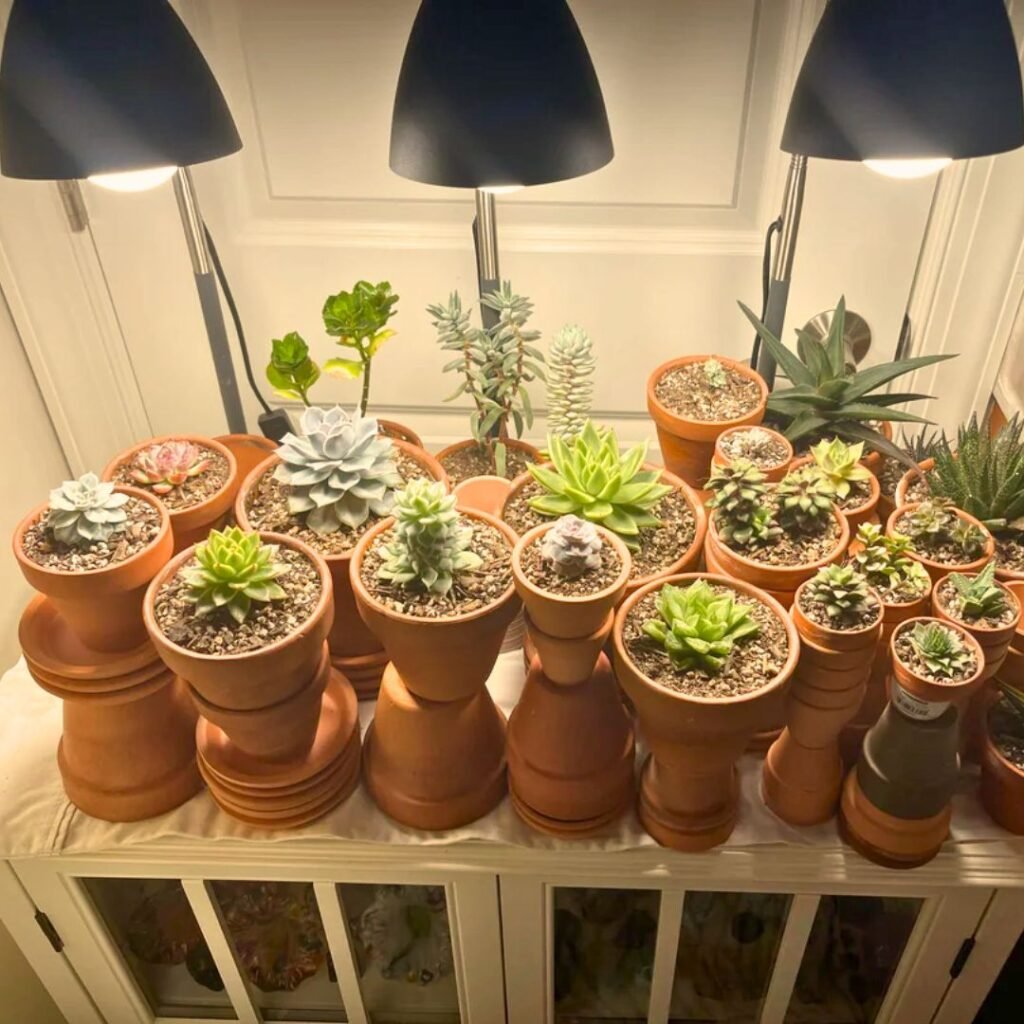
I keep my succulents close to humidity trays because, even though they don’t need much water, a bit of extra moisture in the air helps them out. Dry air can be tough on them, especially with heaters running.
Making a humidity tray is a breeze—I just grab a shallow dish, fill it with water and pebbles, and set the pots on top. The pots never sit in water, but they get a gentle rise in humidity.
It’s especially handy in winter, when the air gets extra dry. When I group a few succulents around one tray, they seem to stay plumper and need less frequent watering.
I’ve noticed the trays help cut down on how often I have to mist or fuss over them. The slow, steady moisture just feels more natural.
Grouping succulents this way keeps things tidy and makes care simpler. Plus, it’s a nice way to carve out a little succulent zone without taking up much space.
3) Group plants with similar light needs to create microclimates

I try to put plants with the same light needs together. It just makes life easier—no guessing who needs to be moved where.
When plants share the same light, they naturally create a microclimate. Their leaves sort of trap moisture and warmth, which is a win for everyone in the group.
For example, I’ll put my low-light plants like ferns and pothos in a shady corner. They all get what they need, and I don’t have to stress about sunburn.
In the sunniest window, I group my bright-light plants—succulents and cacti, mostly. That way, nobody’s stretching for light or getting scorched.
It saves me so much time. I know the whole group is happy, so I’m not constantly moving pots around.
Honestly, since I started grouping by light needs, my plants look healthier and my shelves feel way more organized. It’s a simple fix, but I swear by it.
4) Use pebble trays under pots to increase local humidity
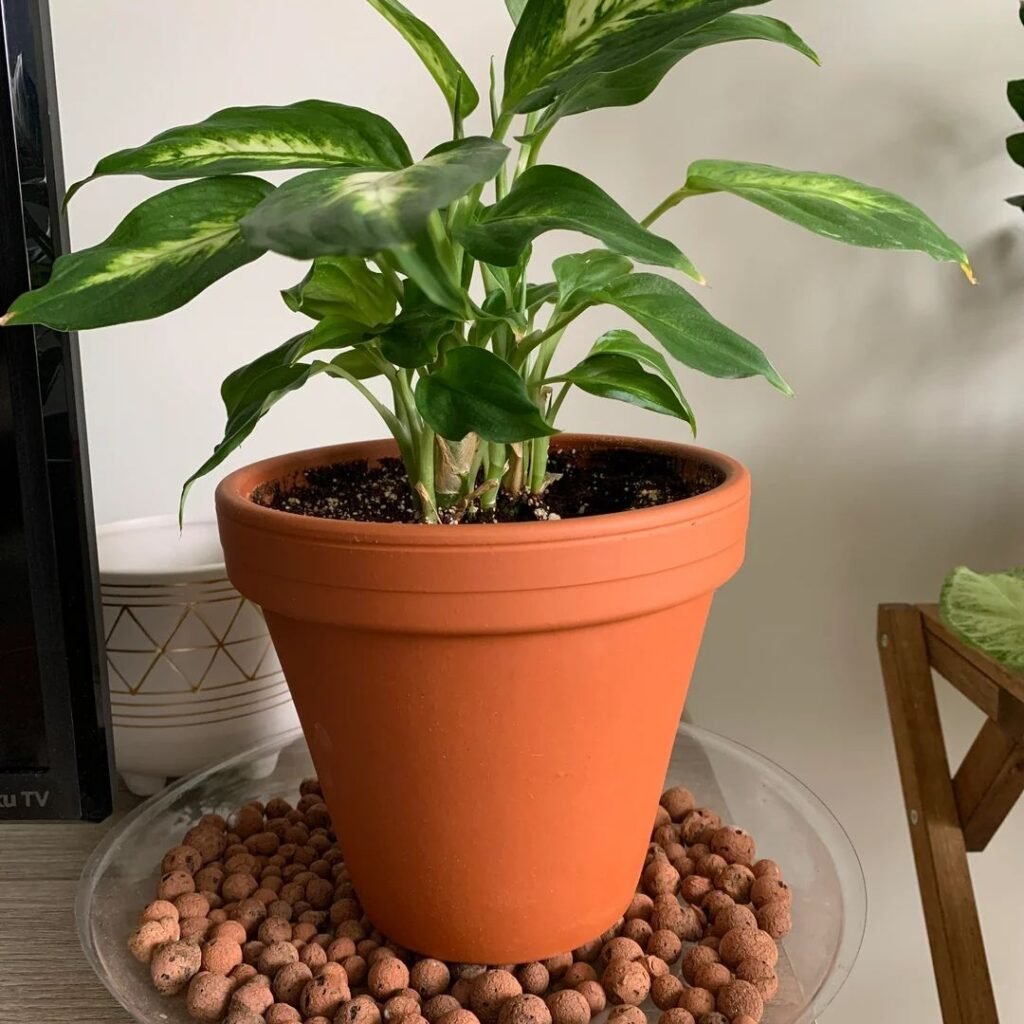
I’m a fan of pebble trays when my plants need extra moisture. They’re easy—just a shallow tray, some pebbles, and water.
I set the pot right on top of the pebbles, making sure the base doesn’t touch the water. That way, the roots stay dry, but the air around the plant gets a little boost of humidity.
The evaporation adds humidity right where it’s needed. Ferns and calatheas, especially, seem to love it.
Refilling is quick—when the water’s low, I just top it off. No fancy gadgets required.
Pebble trays are super affordable, and I can set up a few at once. They blend in with my plant displays, too, which I appreciate.
It won’t humidify the whole room, but it does give a nice little pocket of moisture around the plants. Sometimes, that’s all they really need.
Understanding Microclimates for Plant Grouping
It’s surprising how much plants perk up when I pay attention to the small climate shifts in my home. Light, airflow, and temperature can make one corner totally different from another.
How Microclimates Affect Plant Health
Microclimates are just those odd spots where the air and light feel a bit different from the rest of the room. A sunny windowsill might be warmer and drier, while a spot near a humidifier is, well, obviously more humid.
When I group plants with similar needs into these spots, they just seem to do better. Tropical plants thrive together because they all love the extra humidity that builds up.
Succulents, on the other hand, want drier air and more airflow. Mixing them up with moisture-lovers just leads to disappointment (and droopy leaves).
I keep an eye out for stress signs like yellowing leaves, drooping, or crispy edges. If I spot those, I know it’s time to rethink their spot.
Even a small move—like shifting a plant away from a heater or closer to a brighter wall—can make a big difference. And honestly, these microclimates shift with the seasons, so I try to stay flexible.
Assessing Your Indoor Environment
I like to check how light, temperature, and humidity change throughout my place. A cheap thermometer and hygrometer help me track these changes, but sometimes I just go by feel.
Airflow matters, too. Drafts from windows or vents can dry things out fast, while still corners trap humidity. Once I spot these patterns, it’s easier to pick the right plant for each spot.
Here’s a quick cheat sheet I use:
- Bright, dry zones: cacti and succulents
- Moist, warm corners: ferns and calatheas
- Even, moderate areas: pothos and philodendrons
Seasons mess with things, too. Heaters dry the air in winter, while open windows in summer can cool things down or let in more moisture.
By checking in regularly, I can tweak plant placement before things get out of hand. It’s a small habit, but it pays off.
Common Mistakes to Avoid When Grouping Plants
I’ve definitely made my share of mistakes when grouping plants. Turns out, paying attention to space, airflow, and plant compatibility makes a huge difference.
Overcrowding and Airflow Issues
Packing too many plants together just doesn’t work. Poor airflow traps moisture, which leads to mold, mildew, and sometimes pests.
I’ve seen leaves turn yellow or develop spots when the air stays too damp. Not fun.
Now, I leave at least a few inches between pots. That little bit of space lets air move and keeps humidity from getting out of hand.
I also rotate pots now and then—otherwise, someone always gets stuck in a corner with stale air. If I can fit my hand between plants without squishing anything, I know they’ve got enough room.
Mixing Incompatible Plant Species
I used to group plants just because they looked good together, but honestly, different needs can cause problems. A cactus and a fern are never going to want the same thing.
Now, I match plants by their light, water, and humidity needs. Here’s a quick example:
| Plant Type | Best Match | Avoid Pairing With |
|---|---|---|
| Ferns | Calatheas | Cacti, succulents |
| Orchids | Bromeliads | Desert plants |
| Succulents | Cacti | Tropical plants |
Grouping by care needs saves me a ton of hassle. I’m not constantly worried about one plant drying out while another gets soggy.
Frequently Asked Questions
I like grouping my plants so they stay warm, avoid drafts, and soak up a little extra humidity. Little tricks like water trays, clustering, or picking the right companions really do make a difference indoors.
What are some effective methods to create a microclimate for tropical plants?
I like to cluster tropical plants like ferns and philodendrons. It traps moisture and warmth around them, and I try to keep them where the light is steady.
Can you suggest companion plants that help maintain a humid environment?
Pairing humidity-loving plants—ferns, calatheas, philodendrons—works wonders. When they’re grouped, they all benefit from the extra moisture each one releases.
What are the best practices for arranging plants to optimize warmth?
I stick plants with similar light and heat needs together. Putting them near a sunny window or under a grow light keeps things consistent and avoids stress.
How can I use water features to increase humidity for my plant groupings?
I use pebble trays under pots or set small bowls of water nearby. It’s a simple way to bump up humidity—no humidifier needed.
What type of grouping strategy can protect plants from cold drafts?
I keep plants away from doors, vents, and drafty windows. Clustering them a few feet from these spots helps block cold air, and sometimes I’ll use furniture or a bigger plant as a shield.
Are there any budget-friendly tips for increasing warmth for indoor plants?
I’ve found that putting up a bit of foil or even a reflective board behind my plants does wonders—it bounces light and a bit of warmth right back at them.
Honestly, grouping plants together helps too; they sort of create their own cozy microclimate.
These tricks are super affordable and keep my plants happy without making my energy bill skyrocket.
Recommended Garden Supplies
| Product Image | Our Recommended Gardening Supplies | Check Offers! |
|---|---|---|
Top Top
Top
Top
Top
Top
Top
Top
Top | rePotme Houseplant and Tropical Classic Potting Soil Mix | Check Offer On Amazon |
 Top
Top
Top
Top
Top
Top
Top
Top | Espoma Organic Indoor Plant Food | Check Offer On Amazon |
 Top
Top
Top
Top
Top
Top
Top
Top | GooingTop LED Grow Light 6000K Full Spectrum Clip Plant Growing Lamp | Check Offer On Amazon |
 Top
Top
Top
Top
Top
Top
Top
Top | Soil Moisture Meter | Check Offer On Amazon |
 Top
Top
Top
Top
Top
Top
Top
Top | Govee Hygrometer Thermometer, Bluetooth Enabled! | Check Offer On Amazon |
 Top
Top | LEVOIT Humidifiers for Large Room(Best For Plants) | Check Offer On Amazon |
 Top
Top
Top
Top
Top
Top
Top
Top | Upgraded DIY Automatic Drip Irrigation Kit, 15 Potted Houseplants Support | Check Offer On Amazon |
 Top
Top
Top
Top
Top
Top
Top
Top | Stainless Steel Heavy Duty Gardening Tool Set | Check Offer On Amazon |
 Top
Top
Top
Top
Top
Top
Top
Top | Bonide Insecticidal Soap | Check Offer On Amazon |
 Top
Top
Top
Top
Top
Top
Top
Top | Bonide 32 oz Spray Neem Oil for Organic Gardening | Check Offer On Amazon |
 Top
Top
Top
Top
Top
Top
Top
Top | Garden Safe Fungicide | Check Offer On Amazon |




